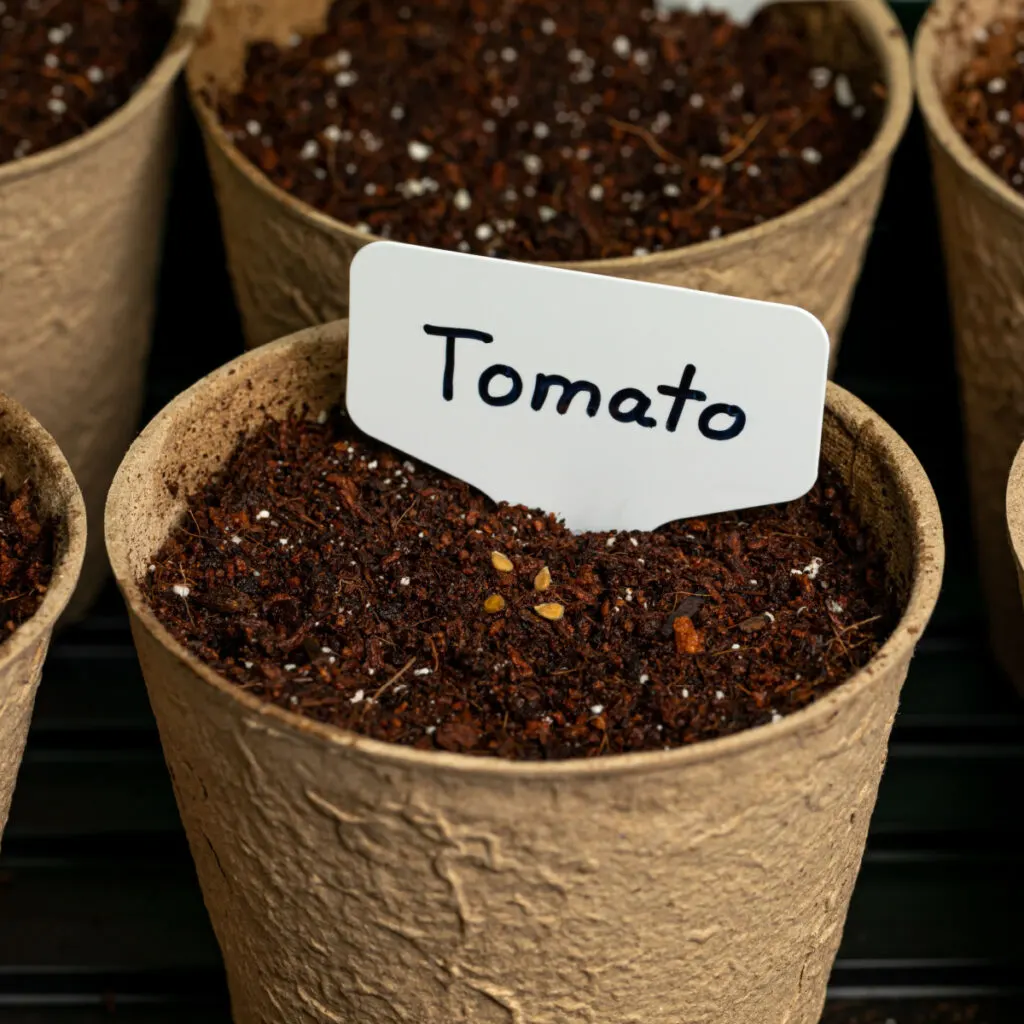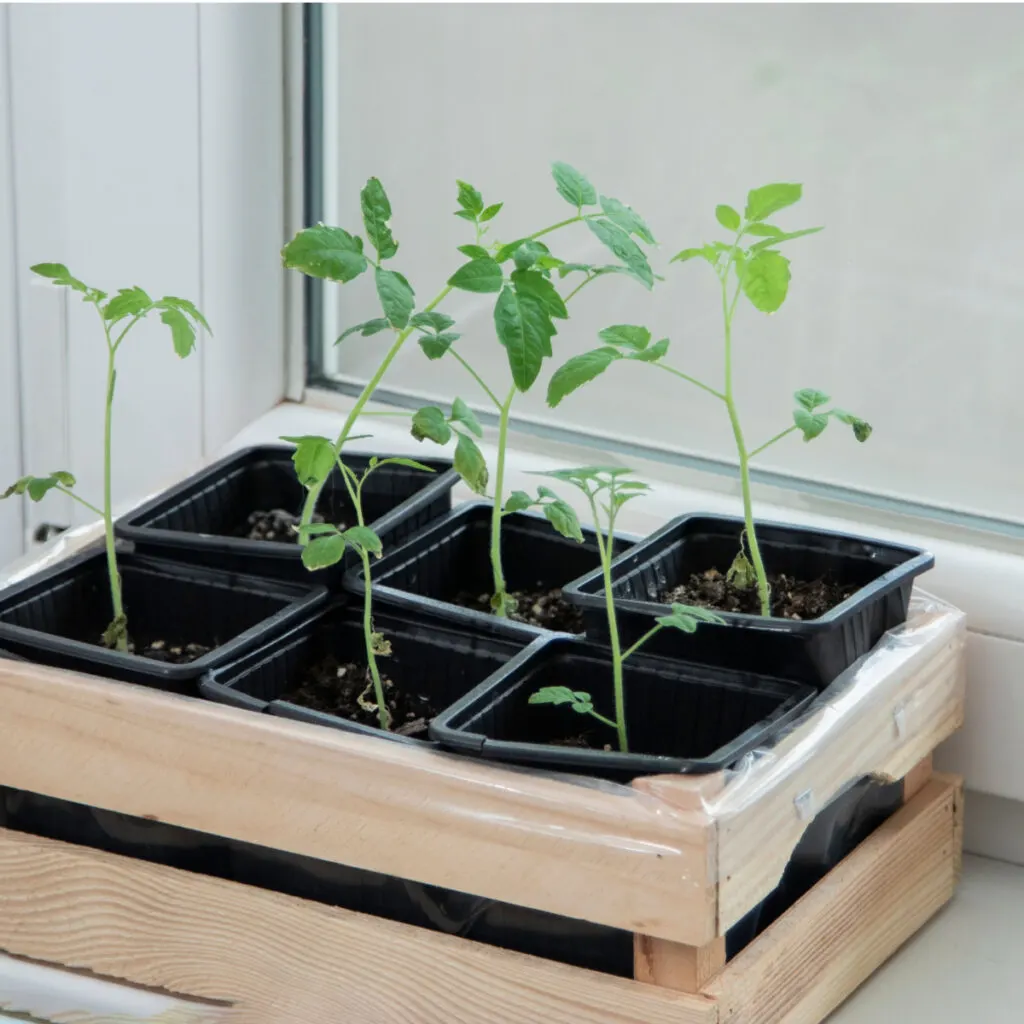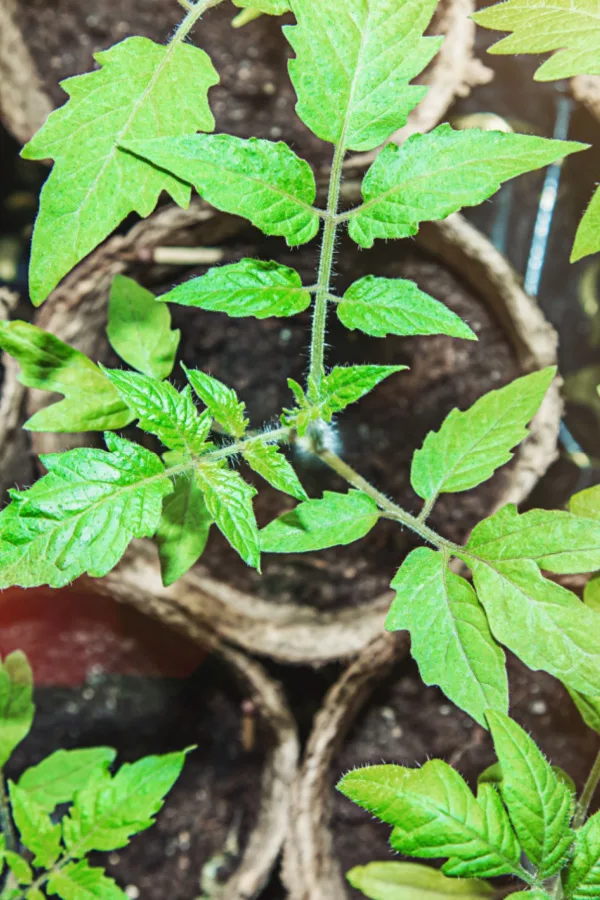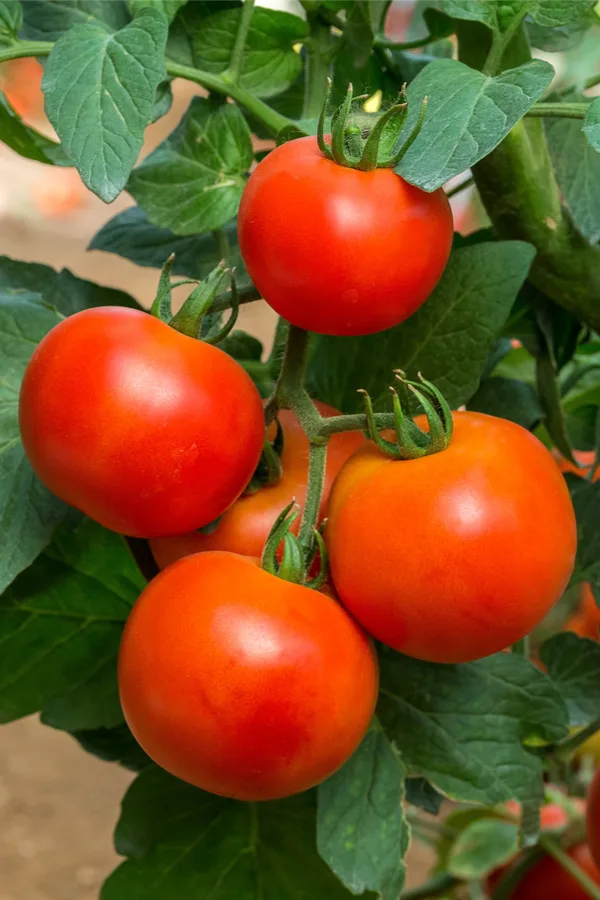If you will be starting and growing your own tomato plants indoors this year from seed, it’s critical to get your plants off to the right start – and the best way to do that is by simply avoiding 4 of the most common seed starting mistakes gardeners make that put their tomato plants at a huge disadvantage before planting day ever arrives!
If there is one thing gardeners love, it’s growing tomatoes. Especially when they can start their own plants from seed. Let’s face it, there is simply something incredibly satisfying about growing your own plants.
It’s somewhat magical to place a tiny seed into soil and watch it turn into a mature plant loaded with red-ripe tomatoes. But as amazing as it can be – many gardeners struggle with growing their own tomato plants from seed. But it doesn’t have to be that way!

Starting and growing your own tomato plants indoors really can be easy. It doesn’t have to be costly. Nor does it have to involve expensive equipment or special grow lights – or even a lot of room for that matter.
In fact, as you will see below, by avoiding just a few common mistakes and giving your plants the most basic of needs – you can and will grow incredibly strong and productive tomato plants. Plants that will be providing you with a harvest beyond your wildest dreams this summer!
4 Big Mistakes To Avoid When Starting Tomato Plants Indoors From Seed
#1 Planting Old / Poor Quality Seeds
If there is one thing that may be more important than anything else, it’s to start with great seeds. Stale, old seeds will not only struggle to germinate, they will struggle to grow, period. Even more, they will have far less of a chance to develop strong roots. And if that wasn’t enough, they are more susceptible to disease as well.
In order to keep their vitality, seeds need to be stored in a cool, dark place. All too often, gardeners throw their extra seeds into their garage or garden shed where they spend the summer in high heat and humidity. Unfortunately, that heat and humidity take its toll on a seed’s strength.

Always start with fresh, high quality seeds. It’s worth the few extra dollars to purchase new seeds than to take a chance on old seeds lying in a drawer. So much effort goes into growing your own plants, but by using bad or old seeds, you jeopardize all of that hard work right from the start.
There are so many great local and online stores now, that it’s easy to find high quality, fresh seeds. It’s a small investment in making sure you have great seeds right from the start.
If you do save your own seeds, make sure to store them in the refrigerator to keep them strong and healthy for the next growing season. See our article: How To Save Vegetable Seeds From Your Garden – Save Big And Grow Better!
2) Starting Seeds In A Window – 4 Huge Mistakes To Avoid When Starting Tomato Plants Indoors From Seed
Another big mistake gardeners make when starting any of their vegetable or flower seeds indoors is to place their seed tray in a sunny window. But this can be especially rough when starting tomato plants.
Plain and simple, the light from a window is not enough to develop strong, stocky, healthy tomato plants. For starters, the sun from the late winter/early spring sky doesn’t provide enough daily light. Seedlings need at least 12 hours of sunlight each day for strong growth. 14 hours a day of light is even better.
Listen In To Our Podcast Below On How To Start Seeds Indoors With Big Success!
Unfortunately, even when growing in a southern facing window, plants are lucky to get half of that amount. Even worse, sunlight coming through a window is far away. Because of that, seedlings stretch out trying to reach it. The result? Weak, thin and spindly plants that will never recover.
The answer? Use artificial light! And it can be as simple as an old fluorescent or LED shop light placed over top of your plants. To grow any vegetable or annual flowers from seed, you don’t need fancy and expensive grow lights. Simple shop lights work wonders to grow tomato plants!
By keeping the lights on 12 to 14 hours right over top of them, you will grow amazingly strong plants! Affiliate Product Link: 4′ LED Shop Lights
#3 Using The Wrong Soil – 4 Huge Mistakes To Avoid When Starting Tomato Plants Indoors From Seed
When starting tomatoes from seed, the soil you use matters! To both germinate and grow strong, healthy seedlings need light, fertile, and well draining soil. Unfortunately, ordinary garden soil and even regular potting soil are not good choices.
Instead, use soil that is specifically designed for starting seeds – or make your own! Good seed starting soil is ultra light and filled with nutrients. This allows seeds to sprout easily and develop strong roots quickly.
There are several excellent seed starting soils on the market, or you can take potting soil and blend it with equal parts perlite, compost and worm castings to make your own at home. Either way, get your plants off to a great start with great soil! Affiliate Link: Sun Gro Horticulture 8-Quart Black Gold 1311002 Seedling Mix
#4 Failing To Fertilize – 4 Huge Mistakes To Avoid When Starting Tomato Plants Indoors From Seed
Last but not least, another big mistake gardeners make with tomato seedlings is to not fertilize them. Yes, proper light and water and good soil all play a big role in a seedling’s life. But at the end of the day, tomato plants are heavy feeders, and they need extra nutrients to power early growth!
The key to fertilizing seedlings is to give them a weak but consistent extra dose of power. And the best way to do that is with a liquid fertilizer.
The Best Fertilizer To Use For Young Tomato Plants
Once your seedlings have germinated and have grown to a few inches in height (usually about 10 to 14 days after they sprout), it’s time to give them a little boost. For this fertilizing, both compost tea and worm casting tea are excellent choices.
Both compost and worm casting tea give plants a low and slow dose of all natural power that is perfect for good plant development. Even better, there is never a worry about burning plants with too much fertilizer.
You can also use a commercial organic liquid fertilizer. But if using this, mix at about 1/4 of the recommended strength. This will help keep seedlings safe from getting too many nutrients all at once since these fertilizers are more powerful than compost or worm casting tea. Affiliate Link: Tomato & Veggie Liquid Plant Food
As for how often to feed your young seedlings, fertilize them every 10 to 14 days until they go into the ground. This will provide continuous power and have your plants rearing to grow outdoors. But whatever you do – feed those tomato seedlings early! For more helpful tips on growing your tomato plants from seed, see The Best Way To Start & Grow Tomato Plants From Seed Indoors – 6 Big Secrets To Success!
Here is to growing your own tomato plants from seed this year – and to having your biggest and best harvest of tomatoes ever! Happy Tomato Growing – Jim and Mary.
Old World Garden Farms
Jim and Mary Competti have been writing gardening, DIY and recipe articles and books for over 15 years from their 46 acre Ohio farm. The two are frequent speakers on all things gardening and love to travel in their spare time.
As always, feel free to email us at thefarm@owgarden.com with comments, questions, or to simply say hello! You can sign up for our free email list in the subscribe now box in the middle of this article. Follow us on Facebook here : OWG Facebook. This article may contain affiliate links.


